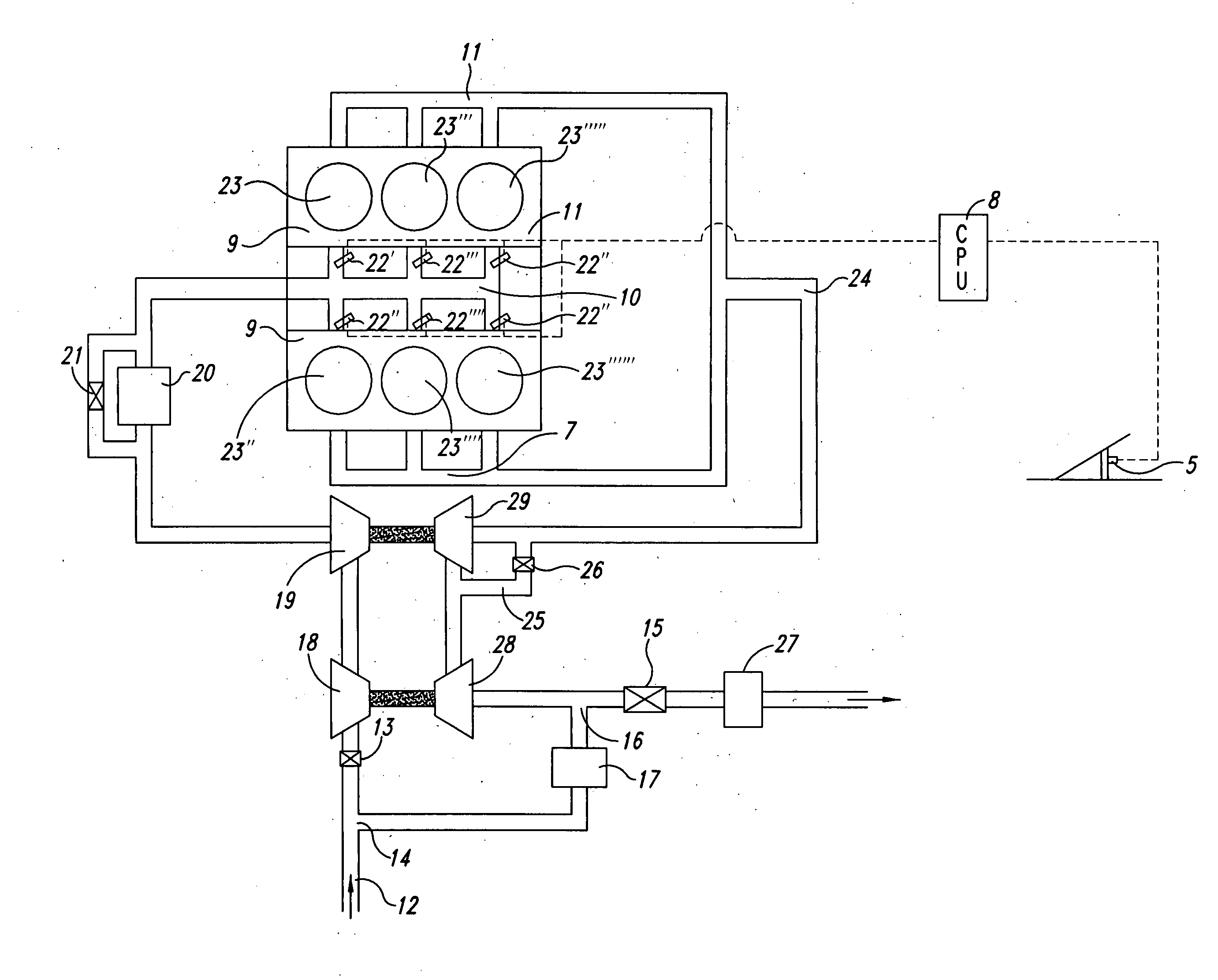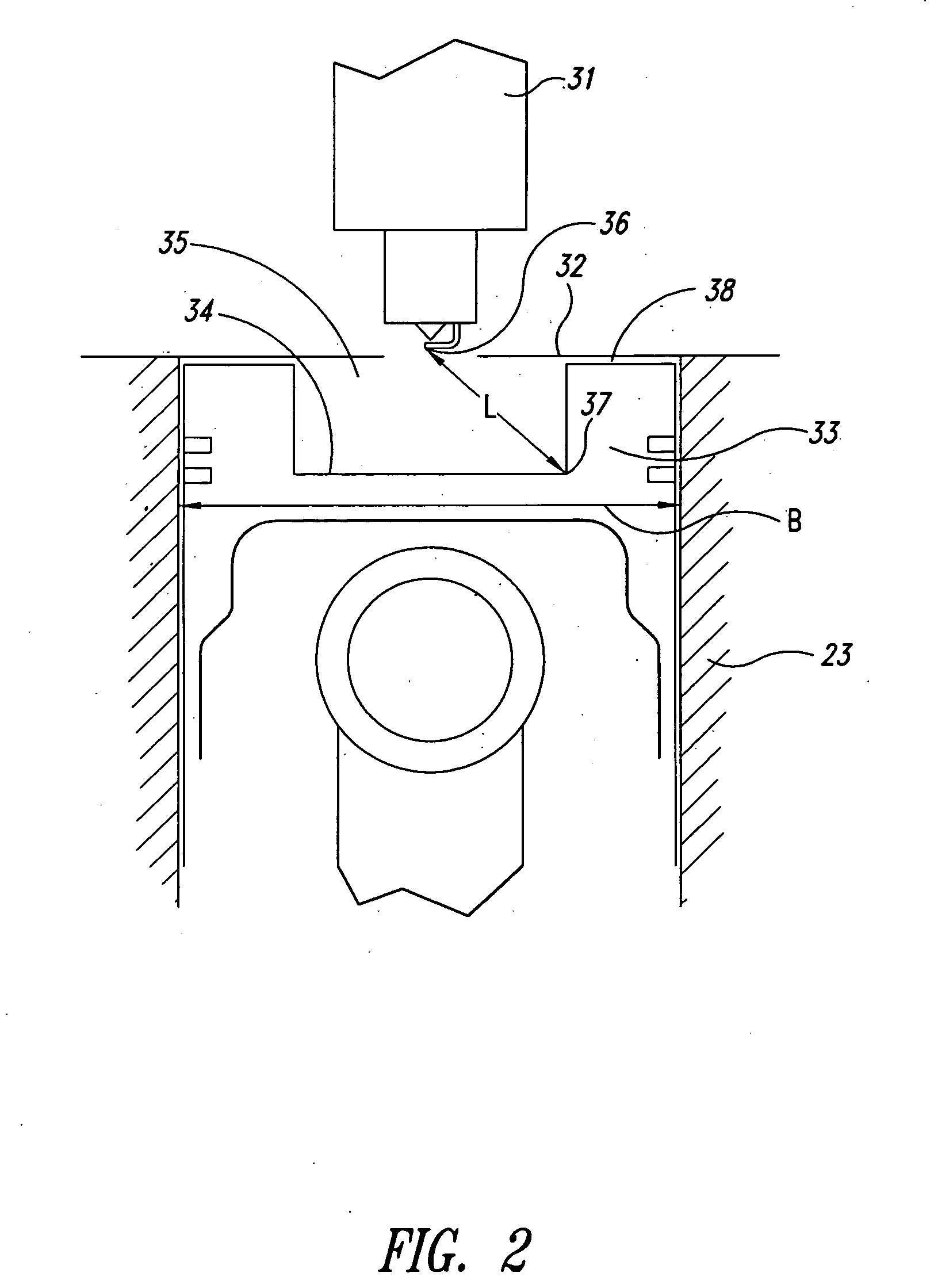High efficiency alcohol fuel engine
a high-efficiency, alcohol-based technology, applied in the direction of machines/engines, mechanical equipment, non-fuel substance addition to fuel, etc., can solve the problems of high engine-out harmful emissions, low combustion efficiency, and high cost of manufacturing and emission control, and achieve high efficiency, high compression ratio, and high efficiency of alcohol-based fuels
- Summary
- Abstract
- Description
- Claims
- Application Information
AI Technical Summary
Benefits of technology
Problems solved by technology
Method used
Image
Examples
Embodiment Construction
[0017]Prior to discussion of the figures and of the preferred apparatus of the present invention, certain factors and relationships in the technology will first be discussed.
[0018]The temperature at the end of the compression stroke (T2) in a fixed compression ratio engine is a critical determining factor, along with the pressure, for the burn rate and time to autoignition, and hence the tendency to knock. The tendency to knock is primarily a function of the laminar burn velocity (laminar flame speed) and the turbulence of the charge-air during the combustion / burn event. The laminar burning velocity (SL) in a spark ignition engine is believed to relate to pressure (p) and temperature (T) generally according to the relationship SL˜Ta / pb where a is around 2 and b is small (around 0.15 to 0.2). Given this relationship, it may be seen that as the temperature increases, the burn velocity increases. On the other hand, when the pressure is increased, the burn velocity decreases.
[0019]The t...
PUM
 Login to View More
Login to View More Abstract
Description
Claims
Application Information
 Login to View More
Login to View More - R&D
- Intellectual Property
- Life Sciences
- Materials
- Tech Scout
- Unparalleled Data Quality
- Higher Quality Content
- 60% Fewer Hallucinations
Browse by: Latest US Patents, China's latest patents, Technical Efficacy Thesaurus, Application Domain, Technology Topic, Popular Technical Reports.
© 2025 PatSnap. All rights reserved.Legal|Privacy policy|Modern Slavery Act Transparency Statement|Sitemap|About US| Contact US: help@patsnap.com



